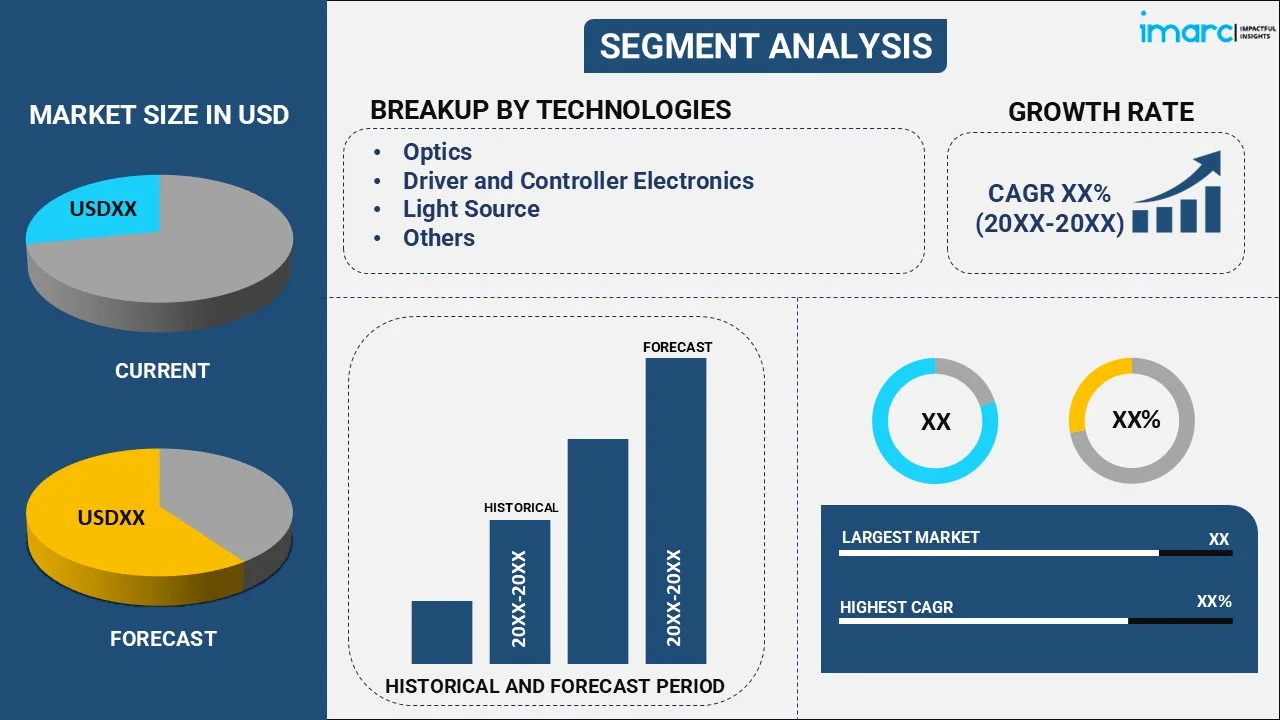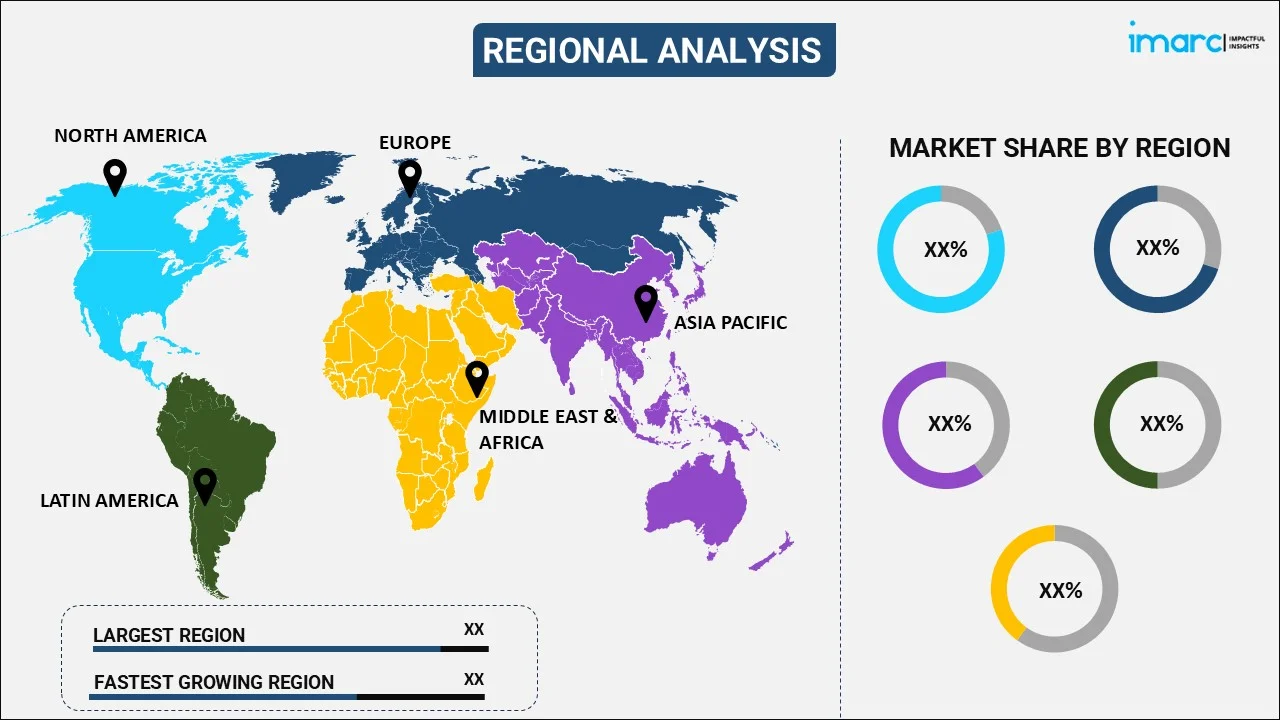
Virtual Retinal Display Market Report by Technology (Optics, Driver and Controller Electronics, Light Source, and Others), Application (Aerospace, Medical, Gaming and Entertainment, Sports, Training and Simulation, and Others), and Region 2025-2033
Market Overview:
The global virtual retinal display market size reached USD 26.2 Billion in 2024. Looking forward, IMARC Group expects the market to reach USD 278.8 Billion by 2033, exhibiting a growth rate (CAGR) of 30.05% during 2025-2033.
|
Report Attribute
|
Key Statistics
|
|---|---|
|
Base Year
|
2024
|
|
Forecast Years
|
2025-2033
|
|
Historical Years
|
2019-2024
|
|
Market Size in 2024
|
USD 26.2 Billion |
|
Market Forecast in 2033
|
USD 278.8 Billion |
| Market Growth Rate 2025-2033 | 30.05% |
A virtual retinal display (VRD) refers to a head-mounted display device that utilizes low-energy lasers to directly show a picture onto the human retina. It offers user with the illusion of watching a standard-sized display floating several feet away. A virtual retinal display provides numerous benefits, such as enhanced brightness, high contrast, improved resolution, and low power consumption. As a result, it finds a wide range of applications across numerous industries, including healthcare, military, aviation and tactical, engineering, gaming and entertainment, sports, etc.
.webp)
Virtual Retinal Display Market Trends:
The increasing demand for enhanced user experience, better content connectivity, and improved Field of View (FoV) while maintaining high levels of privacy is primarily driving the global virtual retinal display market. In addition to this, the rising adoption of virtual and augmented reality in the gaming sector along with the growing integration of VRD with gaming consoles, smartphones, and laptops is further propelling the market growth. Moreover, the widespread utilization of VRD in the healthcare sector with potential applications in therapeutics and surgical procedures is acting as a significant growth-inducing factor. Additionally, the elevating employment of VRD in the engineering industry for providing field employees with access to crucial information, including operational protocols and circuit diagrams, in real-time is also augmenting the growth of the market. Besides this, the expanding usage of VRD in training and simulation activities in the aerospace sector as it saves costs by mimicking the experience and eliminates the requirement for physical setup, is positively influencing the market growth. Furthermore, the extensive R&D activities for the introduction of advanced VRD technology that offers radiation protection to mitigate any health risk are also propelling the global market. In the coming years, the emerging popularity of lightweight and compact devices that create images with high resolution and in real-time is expected to drive the global virtual retinal display market.
Key Market Segmentation:
IMARC Group provides an analysis of the key trends in each sub-segment of the global virtual retinal display market report, along with forecasts at the global, regional and country level from 2025-2033. Our report has categorized the market based on technology and application.
Breakup by Technology:

- Optics
- Driver and Controller Electronics
- Light Source
- Others
Breakup by Application:
- Aerospace
- Medical
- Gaming and Entertainment
- Sports
- Training and Simulation
- Others
Breakup by Region:

- North America
- United States
- Canada
- Asia-Pacific
- China
- Japan
- India
- South Korea
- Australia
- Indonesia
- Others
- Europe
- Germany
- France
- United Kingdom
- Italy
- Spain
- Russia
- Others
- Latin America
- Brazil
- Mexico
- Others
- Middle East and Africa
Competitive Landscape:
The competitive landscape of the industry has also been examined along with the profiles of the key players being Avegant Corp., Himax Technologies Inc., Innovega Inc., Magic Leap Inc., Omnivision Technologies Inc., Optinvent, QD Laser and Vuzix Corporation.
Report Coverage:
| Report Features | Details |
|---|---|
| Base Year of the Analysis | 2024 |
| Historical Period | 2019-2024 |
| Forecast Period | 2025-2033 |
| Units | Billion USD |
| Segment Coverage | Technology, Application, Region |
| Region Covered | Asia Pacific, Europe, North America, Latin America, Middle East and Africa |
| Countries Covered | United States, Canada, Germany, France, United Kingdom, Italy, Spain, Russia, China, Japan, India, South Korea, Australia, Indonesia, Brazil, Mexico |
| Companies Covered | Avegant Corp., Himax Technologies Inc., Innovega Inc., Magic Leap Inc., Omnivision Technologies Inc., Optinvent, QD Laser and Vuzix Corporation. |
| Customization Scope | 10% Free Customization |
| Post-Sale Analyst Support | 10-12 Weeks |
| Delivery Format | PDF and Excel through Email (We can also provide the editable version of the report in PPT/Word format on special request) |
Key Questions Answered in This Report
The global virtual retinal display market was valued at USD 26.2 Billion in 2024.
We expect the global virtual retinal display market to exhibit a CAGR of 30.05% during 2025-2033.
The rising demand for virtual retinal display that enhance user experience, better content connectivity, and improved Field of View (FoV) while maintaining high levels of privacy is primarily driving the global virtual retinal display market.
The sudden outbreak of the COVID-19 pandemic has led to the growing utilization of virtual retinal displays across the gaming sector, during the lockdown scenario.
Based on the application, the global virtual retinal display market can be bifurcated into aerospace, medical, gaming and entertainment, sports, training and simulation, and others. Currently, the gaming and entertainment sector exhibits a clear dominance in the market.
On a regional level, the market has been classified into North America, Asia-Pacific, Europe, Latin America, and Middle East and Africa, where North America currently dominates the global market.
Some of the major players in the global virtual retinal display market include Avegant Corp., Himax Technologies Inc., Innovega Inc., Magic Leap Inc., Omnivision Technologies Inc., Optinvent, QD Laser, and Vuzix Corporation.
Need more help?
- Speak to our experienced analysts for insights on the current market scenarios.
- Include additional segments and countries to customize the report as per your requirement.
- Gain an unparalleled competitive advantage in your domain by understanding how to utilize the report and positively impacting your operations and revenue.
- For further assistance, please connect with our analysts.

 Inquire Before Buying
Inquire Before Buying
 Speak to an Analyst
Speak to an Analyst
 Request Brochure
Request Brochure
 Request Customization
Request Customization



.webp)




.webp)












